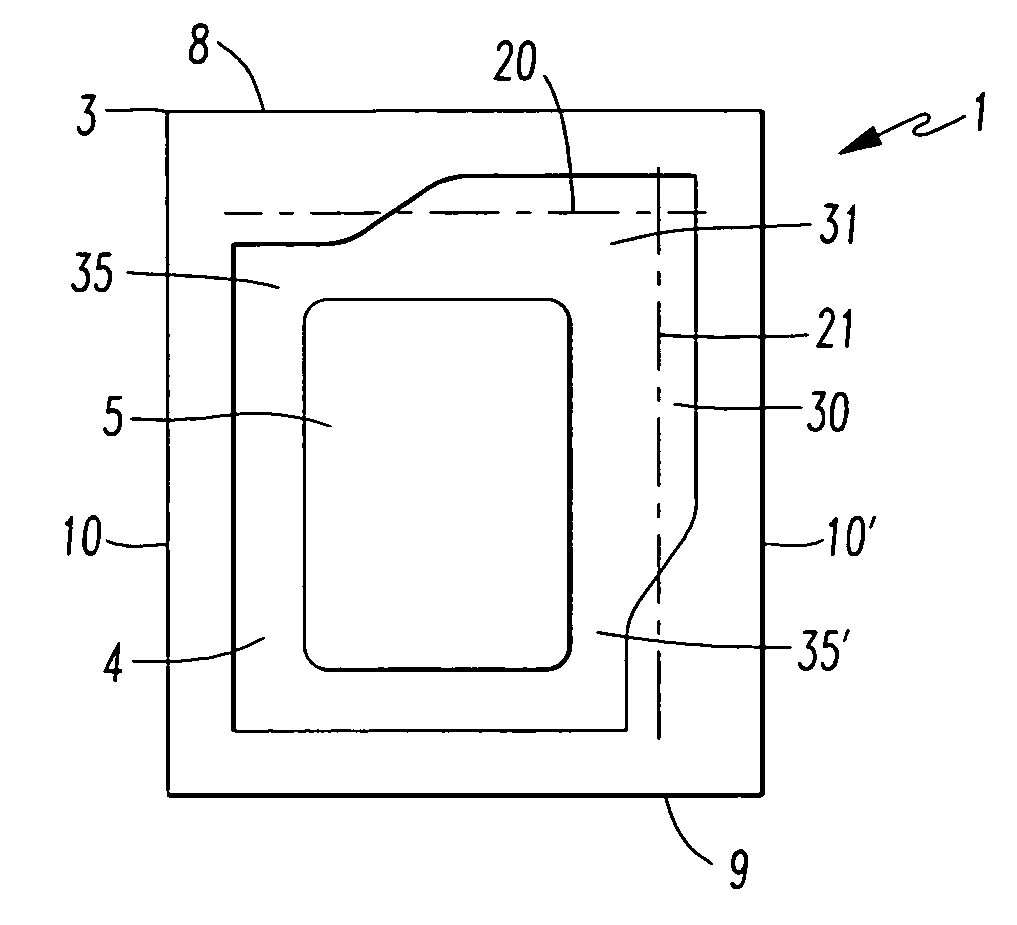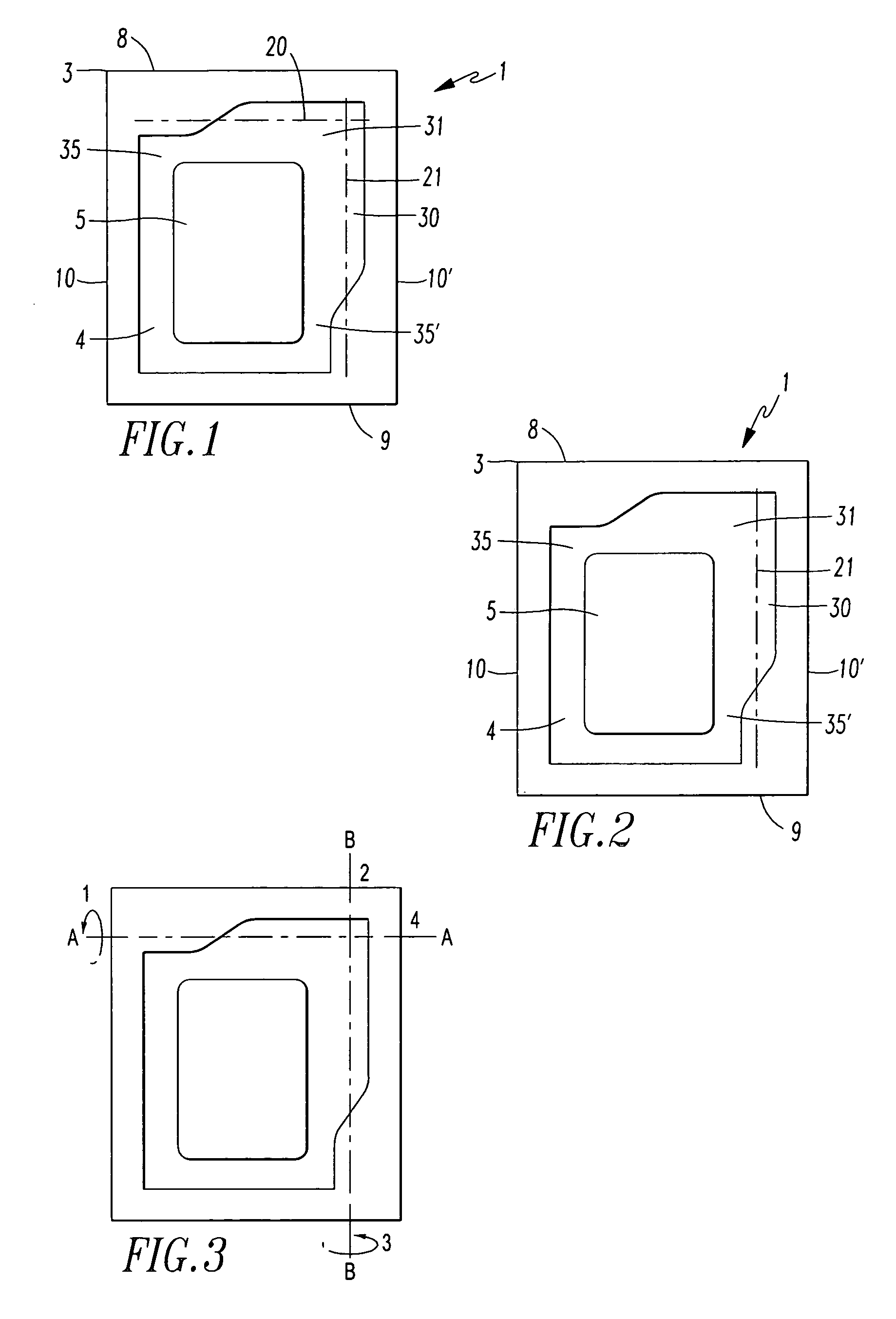Childproof, highly inert individual packaging
a packaging, highly inert technology, applied in the field of childproof, highly inert single-dose packaging, can solve the problems of adversely affecting the quality of the drug preparation, unusable medicaments, and broken active substances, and achieve the effect of favorable effects on the shelf life of the packaged produ
- Summary
- Abstract
- Description
- Claims
- Application Information
AI Technical Summary
Benefits of technology
Problems solved by technology
Method used
Image
Examples
Embodiment Construction
[0075]The packaging (1) according to the invention is a sealed-edge pouch comprising two packaging material elements arranged one lying on top of the other, of which one packaging material element forms the top layer and the other packaging material element forms the bottom layer, between which the product (5), preferably a transdermal therapeutic system or a form of administration in film or foil form, is arranged. The two packaging material elements are in this case sealed to one another in such way that the product (5) is enclosed by a surrounding, continuous peripheral sealing edge (3), which is not peelable. This produces a product receiving region (4) which is closed on all sides and in which the product (5) is contained.
[0076]The sealed-edge pouch (1) has a front edge (8), a rear edge (9) and two preferably parallel running side edges (10, 10′).
[0077]Furthermore, the sealed-edge pouch has lines of weakness (20, 21) with reduced resistance to tearing, along which the packaging...
PUM
| Property | Measurement | Unit |
|---|---|---|
| distance | aaaaa | aaaaa |
| angle | aaaaa | aaaaa |
| distance | aaaaa | aaaaa |
Abstract
Description
Claims
Application Information
 Login to View More
Login to View More - R&D
- Intellectual Property
- Life Sciences
- Materials
- Tech Scout
- Unparalleled Data Quality
- Higher Quality Content
- 60% Fewer Hallucinations
Browse by: Latest US Patents, China's latest patents, Technical Efficacy Thesaurus, Application Domain, Technology Topic, Popular Technical Reports.
© 2025 PatSnap. All rights reserved.Legal|Privacy policy|Modern Slavery Act Transparency Statement|Sitemap|About US| Contact US: help@patsnap.com


